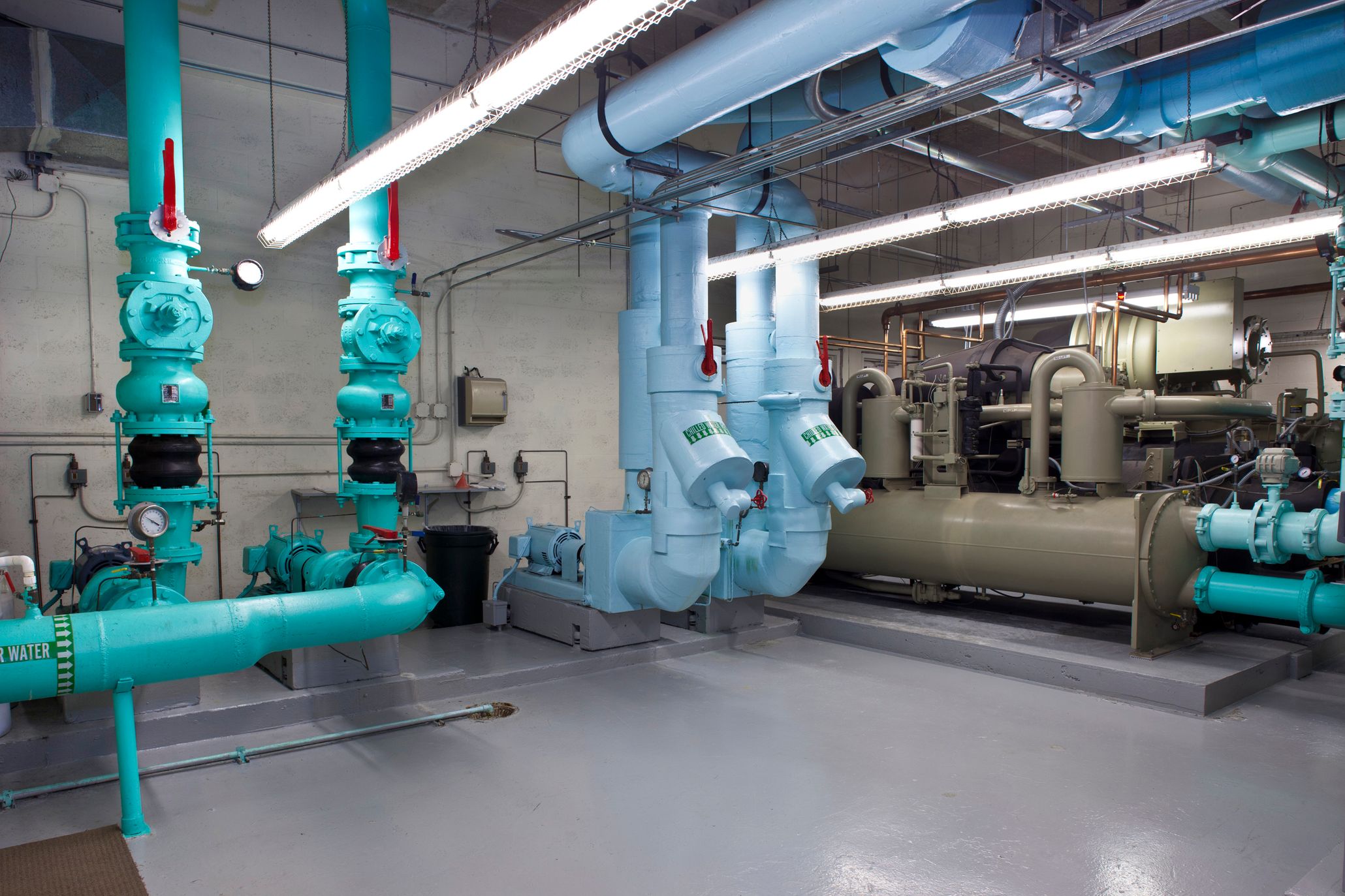Refrigeration Systems: Chilling for a Greener Future
Industrial refrigeration systems have a significant impact on the environment due to their high energy consumption, which accounts for around 10% of the world's electricity demand.
However, recent technological advancements have made refrigeration's role in decarbonisation more significant.
Beyond preservation, cooling technology creates optimal conditions for processes, equipment, and people, especially in industries with high heat production.
Industrial refrigeration systems require tailored solutions and designs based on factors such as production scale, temperature difference, and accuracy.
This article provides strategies to maximise refrigeration efficiency for decarbonisation.
Design for Energy Efficiency
Natural refrigerants and retrofitting
The use of refrigeration in industries has historically relied on synthetic refrigerants such as chlorofluorocarbons (CFCs) and hydrofluorocarbons (HFCs). These refrigerants have a high global warming potential and contribute significantly to GHG emissions.
Natural refrigerants such as ammonia, carbon dioxide, and hydrocarbons have a much lower impact on the environment than synthetic refrigerants. They have excellent thermodynamic properties and can achieve high energy efficiency levels.
Although many industrial refrigeration systems currently use ammonia, there are still many older systems in use. Upgrading these systems with low GWP refrigerants can be a cost-effective way to reduce emissions.
Unlocking multiple benefits through set point adjustments
Refrigeration set points refer to the temperature set by the system operator (or the manufacturer). Refrigeration set points are vital for ensuring products are stored at the correct temperature.
The required temperature range can vary depending on the refrigeration system and the products being stored.
For example, medical refrigeration systems used to store vaccines and medications may require a more precise temperature range and tighter temperature control than commercial refrigeration systems used for storing food.
Setting the set point too low can result in excessive energy consumption and emissions while setting it too high can compromise quality and safety.
By adjusting set points according to the season and product requirements, the compressor and other system components can work more efficiently, reducing energy consumption and emissions.
Careful consideration of set points is crucial to achieve optimal energy efficiency and environmental impact.
Reducing costs and emissions with energy management software
Even when you have equipment to the highest specification and your refrigeration plant is well designed, there are many things you can do to continuously reduce both costs and emissions.
Carefully controlling and managing refrigeration systems is often overlooked due to a lack of training and skills.
Energy management software is an essential tool in reducing the costs and emissions of refrigeration systems. It provides detailed performance modelling of refrigeration components, allowing for real-time monitoring and data analysis across multiple sites and regions.
By using CoolPlanetOS, businesses can make data-driven decisions to maximise refrigeration efficiency for decarbonisation, reduce costs, and improve sustainability.
The software can model various scenarios to evaluate the potential impact of different strategies before implementation. This helps to avoid risks and ensure the best outcome, leading to as much as a 30 to 40 per cent reduction in energy consumption.
Benefits of Pairing Refrigeration Systems with Heat Pumps
Refrigeration systems generate a significant amount of waste heat, which is typically released into the environment. By capturing and using this waste heat, industrial heat pumps can provide a renewable source of heating or hot water for buildings or other industrial processes, reducing the need for fossil fuels.
Heat pumps are typically three to four times more efficient than traditional heating systems. This not only reduces emissions but also lowers operating costs, making it a financially attractive option for many businesses.
Balancing load-shedding and conservation for sustainability
Refrigeration plants can store cold energy for long periods, making them ideal for load-shedding strategies. During peak electricity demand or power outages, refrigeration plants can be turned off or operated at reduced capacity while stored cold energy continues to provide cooling to the facility.
Additionally, refrigeration systems can be designed with load-shedding capabilities that automatically adjust cooling capacity in response to changes in electricity supply and demand.
When combined with energy management systems, facilities can further reduce energy consumption and emissions. Load-shedding can be implemented within a single plant or across multiple sites or regions, and some utilities offer voluntary programs for large energy consumers
Absorption refrigeration cycle over a vapour-compression cycle
The most common type of refrigeration cycle is the vapour-compression cycle. However, the absorption refrigeration cycle has a lower environmental impact, uses natural refrigerants, and consumes less energy (it also makes less noise).
The choice depends on the specific needs and constraints of the application; each has advantages and disadvantages. A vapour compression refrigeration cycle is generally better suited for applications that require higher cooling capacities, while an absorption refrigeration cycle is better suited for lower ones.
An absorption refrigeration cycle uses heat as an energy source, while vapour compression cycles use electricity. If low-cost heat or residual heat from other processes can be obtained, then an absorption refrigeration cycle is ideal.
They generally have lower maintenance and operating costs because they have fewer moving parts and require less electricity.
Communication and collaboration
This might seem obvious, but it's something CoolPlanet experts see too often across all sectors. A lack of communication between departments causes significant, avoidable waste.
For example, chillers running while a plant is in shut-down mode, irregular maintenance, and leak detection. Regular maintenance and cleaning reduce emissions and save money on refrigerant and equipment replacement costs.
A good communication framework with regular meetings, sharing information, energy reports, and simply making sure everyone is aware of upcoming changes to the schedule can save energy and avoid such significant waste.
There are several standards and frameworks to assist you here. CoolPlanet’s preferred one is ISO 50001.
Conclusion
In conclusion, technology can help to maximise refrigeration efficiency for decarbonisation.
Lower carbon emissions can be achieved by embracing and implementing new technologies, adopting sustainable practices, especially ones that prioritise efficiency, and learning and optimising everything a high-quality energy management software platform has to offer.
By doing so, it becomes possible to reduce the high environmental impact of global refrigeration and cooling and advance the decarbonisation of industry.





